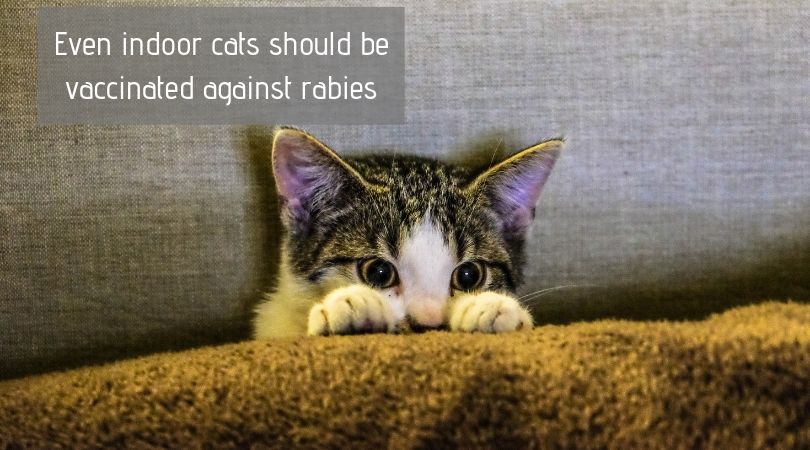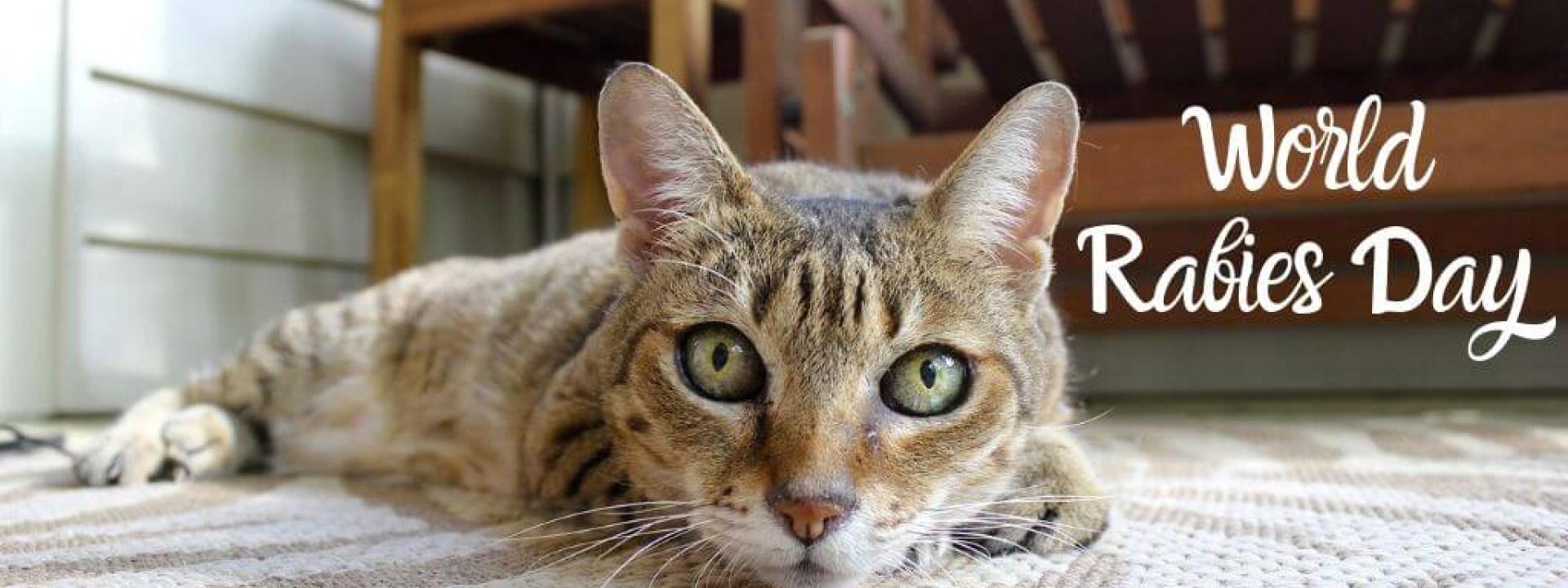Rabies. The word conjures an image of an angry animal frothing at the mouth and running wild ready to sink its teeth into anything that moves. While that’s unpleasant to consider, what’s worse is that such a bite is often fatal.
Fortunately, World Rabies Day on September 28th is a perfect reminder to ask yourself if your pets are up to date on their rabies shots. If you’re not sure, then think back to when you last visited your veterinarian. Across the U.S., many veterinarians will give you a metal tag that indicates the animal is current. If you don’t have the tag or don’t recall, then please call your veterinarian’s office to doublecheck and make an appointment if needed.
Rabies is more common than you may think. It’s not just for wildlife and stray dogs. It affects people and pets – even indoor ones.
But first, what is rabies?
Rabies is a Virus
If you’ve ever wondered what rabies is, you’re not alone. Many people are hazy on the specifics. Know that it’s a dangerous virus and only attacks mammals. Fish and reptiles can’t get it
It’s usually transmitted via saliva, though in rare occasions it can also be transmitted via an open cut or via the eyes, nose, or mouth.
Once the virus gets into the victim’s system, it attacks the nervous system and causes inflammation in the brain. The victim is often aggressive; however, they can be the opposite and be exceptionally docile. Other symptoms do include frothing at the mouth, excessive drooling, and paralysis.
Yet, rabies is completely preventable with an up-to-date rabies vaccine.
Busting a Common Myth
Many people believe only wildlife like foxes, raccoons, bats, or stray dogs get rabies.

Yet, people and household pets are also at risk. According to the Centers for Disease Control (CDC), “Every year, about 40,000 people receive a rabies prevention treatment called post-exposure prophylaxis (PEP) because they had contact with [a] potentially rabid animal.”
It turns out, that while there is treatment for humans who are bitten, there is no such treatment for our dogs or cats. If Fluffy is bitten by a rabid animal, then call your veterinarian right away. They’ll make an assessment based on your pet’s vaccination records, behavior, and whether or not the biting animal was rabid.
The American Veterinary Medical Association says, “Even if your dog, cat or ferret has a current vaccination, he/she should be revaccinated immediately, kept under the owner’s control, and observed for a period as specified by state law or local ordinance. Animals with expired vaccinations will need to be evaluated on a case-by-case basis.”
Does Your Indoor Cat Really Need a Rabies Shot?
The short answer is, “yes.”

Not only is an up-to-date rabies shot required by law in most (if not all) states, but even if your cat never left the confines of your home, other creatures can get in. You may have experienced a raccoon or bat in your home before.
Plus, indoor cats have been known to wander through an open door or window. Others have panicked when being put in the car for their trip the veterinarian – which is one reason we recommend a cat carrier.
Veterinarians know most cats don’t like car rides and this sometimes results in healthcare gaps.
To help, some veterinarians offer mobile, or “house call,” services now where they’ll come to you. In some states, pets are expected to have a rabies vaccine as kittens or puppies and then 3-year boosters after that.
Are your pets up to date on their rabies vaccine? If you have any questions, please contact us!

